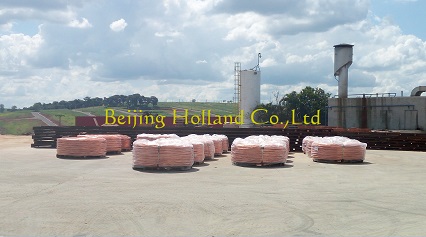Understanding Copper Scrap Recycling: Two Key Methods
Copper scrap recycling is a crucial process in the copper industry, enabling the recovery and reuse of valuable copper material. There are several methods employed to recycle copper scrap, but two of the most notable are the Upward Casting Method and the Continuous Casting and Rolling (CCR) method. In this article, we will delve into the differences in feedstock, production output, and the types of products each method can produce.
- Up Casting Method
The Upward Casting Method is a widely used technique in copper recycling. Here’s a breakdown of how it works and its characteristics:
1. **Feedstock**: The primary feedstock for the Upward Casting Method is high-purity copper scrap. This method is ideal for recycling copper that is relatively free from impurities.
2. **Production Output**: The Upward Casting Method typically produces lower quantities of recycled copper compared to the CCR method. This is because it is a batch process rather than a continuous one, leading to lower overall efficiency in terms of volume.
3. **Products**: The copper produced through the Upward Casting Method is often used for manufacturing high-quality products such as oxygen-free copper rods, wires, and other specialty items. This method is favored for its ability to produce copper with excellent electrical conductivity and high ductility.
- Continuous Casting and Rolling (CCR) Method
The Continuous Casting and Rolling (CCR) method represents a more modern and efficient approach to copper recycling. Here’s what sets it apart:
1. **Feedstock**: The CCR method can handle a broader range of copper scrap, including lower-grade material. This versatility makes it a preferred choice for large-scale recycling operations.
2. **Production Output**: As the name suggests, the CCR method is a continuous process, which allows for higher production rates. It is significantly more efficient in terms of output compared to the Upward Casting Method, producing large quantities of recycled copper in a relatively short time.
3. **Products**: The CCR method is used to produce a wide range of copper products, including copper rods, wires, and strips. This method is particularly suited for large-scale industrial applications where the demand for recycled copper is high.
- Comparison and Applications
While both methods are effective for copper recycling, they cater to different needs and market demands. The Upward Casting Method is ideal for applications requiring high-purity copper, making it suitable for electronics and other high-tech industries. In contrast, the CCR method is designed for high-volume production, serving industries that require large quantities of recycled copper for construction, automotive, and general manufacturing purposes.
- Beijing Holland Copper Recycling Solutions
At BJHolland, we are passionate about providing state-of-the-art copper recycling equipment and comprehensive plant solutions tailored to meet the unique needs of our clients. Whether you are looking to implement the Upward Casting Method or the CCR method, we have the expertise and technology to help you maximize efficiency and output.
Join the growing number of businesses that are making a positive impact on the environment through efficient copper recycling. Contact us today to learn more about our cutting-edge equipment and how we can help you achieve your recycling goals.
Let’s work together to create a sustainable future!







 2024-07-05 16:09:23
2024-07-05 16:09:23 More
More
 More
More




